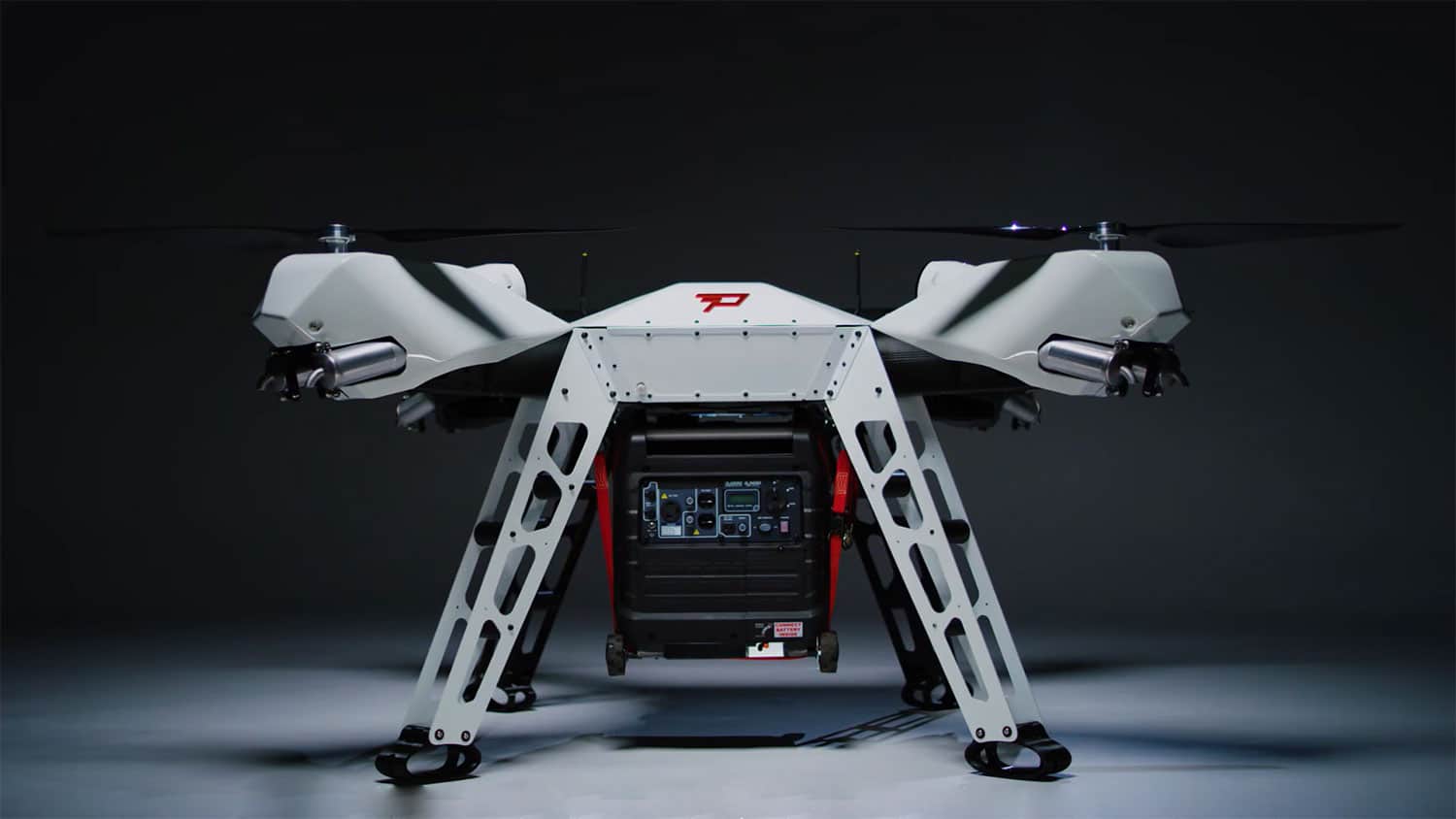
Specialized heavy-lift drone producer Parallel Flight Technologies has been tapped by USDA Wildlife Services to adapt its Firefly UAV developed to assist firefighters for a natural wildlife preservation project aiming to eradicate a destructive population of invasive rats on Wake Island.
The operation will be carried out in conjunction with the US Air Force, which is responsible for the US-administered atoll and maintains a mid-Pacific base there. Under the plan, Parallel Flight will modify its hybrid-powered Firefly heavy-lift drone to operate long-endurance missions hauling a specialized spreader to distribute pellets made for the rat eradication objectives around Wake Island.
If successful, the company’s UAV, which can carry 100 lb. payloads for up to two hours, will replace far more expensive and potentially dangerous helicopter flights for such efforts.
Read: Firefly (really) heavy-lift drone boasts mega-endurance, too
The Parallel Flight Firefly heavy-lift drone gets that kind of performance by combining internal combustion engines with a 60V, 5000 mAh battery. It was selected for the Wake Island trial based on its contributions as a supply transporter for firefighters, as well as in carrying out controlled burns.
It has also been adopted for big industrial, engineering, construction, medical supply deliveries, and humanitarian operations, during which by limiting payloads to 40 lb. the craft has remained aloft for up to four hours – and a whopping seven if loads are cut to 10 lb.
The objective of the Wake Island project will be to replicate successful invasive rat eradication efforts on the Galapagos Islands in 2021. Similar deployments of drones have been central to other campaigns to rid Pacific Islands of the invasive rodents, which since arriving with humans on boats have become so destructive to native wildlife that some species have become extinct.
Read more: Darwinian drones rid Galápagos Islands of invasive rats
Flora and fauna on the islands are considered the most diverse on the planet, but also among the most threatened by introduced dangers like invasive predators. Those dots of land in the oceans account for 75% of reptile, bird, amphibian, and mammal extinctions, with rats responsible for 86% of those.
In order to eliminiate that risk on Wake Island, Parallel Flight will be operating slow, low-level sorties of its heavy-lift drone over often difficult terrain that could expose helicopter crews to dangerous situations.
Read: After rats, Galápagos Islands drones combat invasive plants
In addition to hauling larger loads of rodenticide for longer periods of time than other UAV options, the Firefly can also be pre-programmed to drop precise volumes of the pellets on areas with heavy rat populations during automated missions.
“We are excited to collaborate with USDA and other partners on this important project,” said Parallel Flight CEO Joshua Resnick. “Our goal is to improve the safety, cost, and effectiveness of current operations and to promote island conservation efforts, globally. While Wake Atoll is the testing ground for our heavy lift platform, this application has significant growth potential for animal baiting, wildlife damage and disease management operations.”
FTC: We use income earning auto affiliate links. More.



Comments